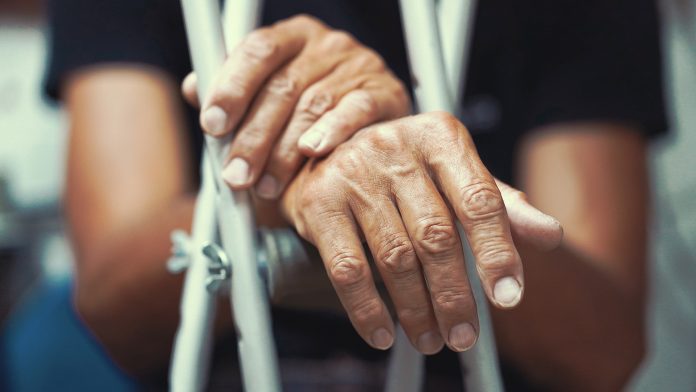
The International Osteoporosis Foundation explains how the implementation of Fracture Liaison Services could improve secondary fragility fracture prevention in Europe.
In Europe, older adults sustain more than 4.3 million osteoporosis-related broken bones (known as ‘fragility fractures’) each year. That is equivalent to eight fractures per minute.
As well as resulting in premature deaths and long-term disability, osteoporosis-related fractures cost European healthcare systems €57 billion in direct costs annually. It is not an exaggeration to call this a healthcare crisis – and it will only worsen unless action is taken. As Europe’s population ages, the number of fragility fractures is set to rise by almost 25% from 2019 to 2034, with some 5.34 million fractures expected to occur annually.1 Hip fractures in particular are costly, resulting in significant morbidity, hospitalisation, surgery and prolonged rehabilitation, with many surviving patients not returning to their pre-fracture level of mobility and independence.
One tried and proven way to stem the tide of fragility fractures is through the systematic identification and treatment of people who have already fractured. The rationale for this is clear. Currently, even after a fracture, 60–85% of women in Europe do not receive treatment for osteoporosis and thus are not protected against recurring fractures.2 Yet we now know that people who suffer a fragility fracture are at five times greater risk of having a second fracture. Looking at it from another perspective, we know that almost half of patients presenting with hip fractures have previously broken another bone. That first fracture should have been a red flag to initiate post-fracture care, including osteoporosis and falls prevention management, that would reduce the likelihood of recurring fractures.
This is where a post-fracture care coordination programme such as a Fracture Liaison Service (FLS) can make a difference. An FLS is a service within a hospital that provides for routine assessment and management of postmenopausal women and older men who have sustained a fragility fracture. The FLS systematically identifies patients and assesses their risk of further fractures and their need for anti-osteoporosis treatment and falls assessment. Within an FLS, a dedicated coordinator, often a nurse, works closely with the patient, primary care physician, orthopaedic and trauma department, and osteoporosis and falls service. This ensures that fracture patients do not fall through the cracks, but instead are offered the long-term, multidisciplinary management needed to reduce their high risk of recurring fractures.
Dr Philippe Halbout, CEO of the International Osteoporosis Foundation (IOF), points to the importance of FLS implementation in Europe and the need for action:
“Notwithstanding some notable recent progress, the vast majority of European national healthcare systems lag behind in providing FLS, the single most important health service intervention to stem the increasing burden of fragility fractures in our older populations. Despite the proven effectiveness of FLS, only six countries in Europe offer these services in at least 25% of their hospitals.1 This is an unconscionable gap in service provision which must be addressed as it is a missed opportunity to reduce the occurrence of costly, life-threatening secondary fractures in the most vulnerable.”
The importance of the Fracture Liaison Service (FLS) for fragility fracture care
FLSs have been shown to be clinically and cost-effective in many different studies, including by increasing anti-osteoporosis treatment uptake, improving long-term adherence and reducing secondary fracture rates to ultimately decrease the burden of fragility fractures. A recent study by a Spanish FLS found that, compared with standard management, its FLS greatly increased the rate of persistence of treatment after hip fracture – with 72% versus 14% at 12 months, and 59% versus 12% at three years.3 In terms of direct cost savings, a simulation model in Sweden found that if people who were prescribed osteoporosis medication stayed on treatment for 50% longer, a total of €3.3 million would be saved over 10 years.4
Although so much more needs to be done, it is important to note that there is an ongoing, concerted effort to support the implementation of secondary fracture prevention in Europe and other regions of the world. The International Osteoporosis Foundation’s Capture the Fracture® (CTF) programme, which celebrates its tenth anniversary this year, has been a driving force for the support, evaluation, and recognition of FLSs. The CTF programme was given a real boost in 2019 with the launch of the Capture The Fracture® Partnership, an IOF initiative in partnership with Amgen and UCB, in collaboration with the University of Oxford. This first-of-its-kind initiative has enhanced the outreach and scope of the CTF programme, leading to a burst of activity and interest in FLS development and implementation. As a result, the CTF network now includes 765 FLSs in 50 countries, including 375 FLSs across the European continent, representing a 118% increase since 2019.
The Capture the Fracture programme
A key component of the CTF programme is the free evaluation for FLSs based on 13 key standards, as well as the provision of certificates of achievement and recognition on the CTF Global Map of Best Practice. CTF has also developed a broad range of educational materials, training workshops and mentorship opportunities, and other resources to support the implementation and sustainability of FLSs around the world.

© iStock/KatarzynaBialasiewicz
Another important mission of the CTF programme is to advance national coalitions which can help drive FLS development and sustainability as well as broader health policy change to prioritise osteoporosis and fracture prevention. In Europe, several national coalitions have stepped up efforts to drive policy change. These coalitions bring together a large panel of stakeholders, including healthcare experts, national organisations with an interest in bone health, patient societies and policymakers. Notable examples are the Fragility Fracture Observatory in Italy and the Platform for the Prevention of Osteoporosis Fractures in Spain. In France, the Alliance Nationale Contre l’Ostéoporose (ANCO), a national coalition comprised of established stakeholders and patient organisations who work in tandem, has published a White Paper and has engaged with policymakers for the establishment of a set of recommendations for the adaptation of the healthcare system and health policies to include a strategy for osteoporosis management. In the UK, a country which has been a frontrunner in FLS development, organisations such as the Royal Osteoporosis Society and the Royal College of Physicians’ Falls and Fragility Fracture Audit Programme have successfully advocated for FLS implementation. As a result, the UK has the highest rate of FLS implementation within Europe, with FLS reported for more than 50% of hospitals.
Professor Cyrus Cooper, President of IOF, stated: “We are pleased with the progress which has been made under the IOF Capture the Fracture umbrella, a flagship initiative which we launched in 2012. Since then, much progress has been made in Europe and around the world. I particularly applaud the important new policy initiatives to expand osteoporosis and secondary fracture prevention that are growing in momentum in different European countries. Our hope is that these important initiatives will be emulated across the Continent so that all fracture patients receive the post-fracture care that will enable them to live active and independent lives.”
While the call to action by national and international osteoporosis advocates and organisations such as IOF carry weight, it is the words of the patients themselves that truly highlight the need for better post-fracture care. In a personal story shared recently in UK media, Alexandra Fuller, a woman with osteoporosis who lives in Norwich, UK, described how she sustained a spinal fracture in her back while she was asleep, and eventually discovered that she had developed five spinal fractures.4 Unfortunately, there was no FLS in her local hospital, a service which would have facilitated an accurate diagnosis and early management. In the media report, Craig Jones, Chief Executive of the Royal Osteoporosis Society, said: “The problem is that lots of parts of the country do not have these Fracture Liaison Services. People are breaking their bones because of this condition, they are being fixed up and forgotten about in fracture clinics, which costs the NHS a lot of money.”
Mrs Fuller believes that an FLS service would have made a difference, stating: “It concerns me greatly that there is not a Fracture Liaison Service where I live. If there was, I may have been diagnosed much earlier and it could have saved me from having multiple fractures.”5
IOF, together with advocates across Europe, invite all health authorities and interested hospitals to learn more about FLS implementation by contacting Capture the Fracture.
References
1. Kanis JA, et al. SCOPE 2021: a new scorecard for osteoporosis in Europe, Arch Osteoporos 2021. All resources at https://www.osteoporosis.foundation/scope-2021
2. International Osteoporosis Foundation. 2018. Broken bones, broken lives: A roadmap to solve the fragility fracture crisis in the United Kingdom. Nyon: IOF
3. Naranjo, A., Molina, A., Quevedo, A. et al. Long-term persistence of treatment after hip fracture in a fracture liaison service. Sci Rep 12, 9373 (2022). https://doi.org/10.1038/s41598-022-13465-x
4. Jonsson E, Hansson-Hedblom A, Ljunggren Ö et al. (2018) A health economic simulation model for the clinical management of osteoporosis. Osteoporosis International 29 (3):545-555. doi:10.1007/s00198-017-4325-4
5. ITV News Anglia, July 10, 2022: Osteoporosis: Norfolk woman who fractured spine while sleeping calls for end to ‘postcode lottery’.
For further information contact the International Osteoporosis Foundation.
http://www.osteoporosis.foundation
https://www.linkedin.com/company/international-osteoporosis-foundation
https://www.facebook.com/iofbonehealth
https://twitter.com/iofbonehealth
https://www.instagram.com/international_osteoporosis/
https://www.youtube.com/iofbonehealth
This article is from issue 22 of Health Europa Quarterly. Click here to get your free subscription today.






















